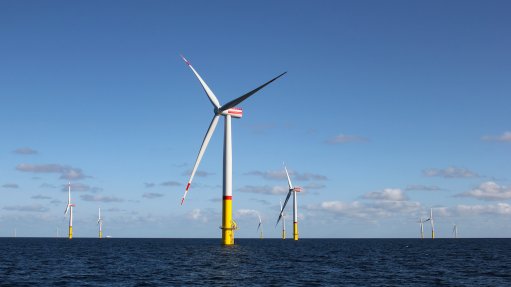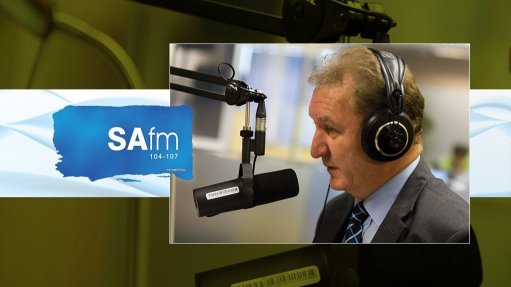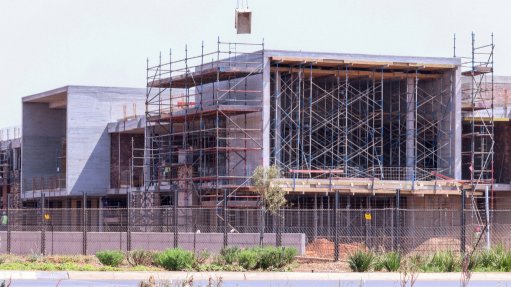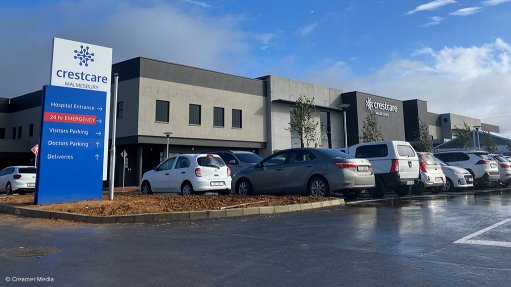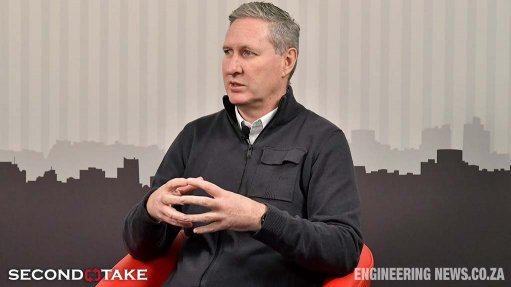South African mining companies embracing social upliftment
The development of the South African mining industry from the re-entry of the country into the international business sphere has been primarily focused on the role that it can play in boosting the economy, where, traditionally, it has been a pillar of strength.
In line with this focus on gearing the mining industry to meet international standards, mining companies have come to realise the importance to their businesses of near-mine communities and are heading in the direction of meeting their Mining Charter obligations towards them.
Charter Entrenchment
In an effort to ensure the proper progression of the industry in line with international best practice principles, without losing sight of the role that local communities should play in this progression, the South African Chamber of Mines and industry stake- holders developed the charter, which comes with performance scorecards.
Among the objectives of the charter are mine community development and improved housing and living conditions of mineworkers, who should preferably come from communities near operations.
Law firm Werksmans Attorneys director Wessel Badenhorst reports that there should be no excuse for mining companies that fall short of these objectives.
“The Mining Charter is not merely a document containing the goals to be achieved by the mining industry; in many circles, the charter is accepted as law and noncompliance with its provisions is considered a breach of the Mineral and Petroleum Resources Development Act,” says Badenhorst.
The Act states that, if mining rights holders breach the Act or any condition of its economic empowerment guidelines, the Mineral Resources Minister may revoke mining rights after due process has been followed.
Bearing this in mind, Badenhorst reports it is clear that government wants to see trans- formation and social upliftment in the mining industry, and any mining company which discounts the charter does so at its peril.
From No Room to Three Rooms
One of the most prominent social aims of the charter is the improved housing and living conditions of mineworkers.
It is no surprise that this aim, along with the aim of uplifting local communities, was specifically included in the charter.
“As a labour-intensive industry, mines impact greatly on local communities; mines are often situated in remote areas with underdeveloped infrastructures, and offer the only source of employment and opportunity for participation in the formal economy in the area,” says Badenhorst.
So it would make sense that mining companies would take the lead in delivering on the promise made by the African National Congress 17 years ago to provide adequate housing for poor and disadvantaged com- munities.
One such community is the Steve Tshwete municipality, in Mpumalanga, which holds the coal resources South Africa needs to power Eskom’s power stations.
An active mining company in this area is South Africa’s fourth-largest coal exporter by volume, Optimum Coal, born out of the need for global giant BHP Billiton to secure black economic-empowerment credits.
Earlier this yeaer, the company joined hands with the local municipality to deliver 100 houses to the public in a R13-million project.
Optimum Coal CEO Mike Teke reports that, against the backdrop of the acute need for houses in Mpumalanga, Optimum Coal and the municipality aimed to fast-track the delivery of high-quality houses in the province.
In 2005, a portion of the Rockdale farm was bought by the Nkangala district municipality from Kanhym Estates. The municipality undertook a comprehensive town planning process to establish a township on the land, earmarking 3 000 stands for an integrated housing development that ranged from high-quality low-cost houses to middle-income units.
In September 2009, the municipality and Optimum Coal, the owner of two large-scale coal complexes in the region, concluded a memorandum of understanding for the delivery of the houses.
“Construction has been under way since May 2010 and the project is now 98% complete. A total of 62 houses have been handed over to beneficiaries,” says Teke.
The municipality is installing bulk services for water and sanitation infrastructure with assistance from the Nkangala district municipality. In addition, Optimum Coal made a commitment, as part of its social labour plan objectives, to provide 1 000 stands at the Rockdale farm with water and sewerage infrastructure. Township services, including water provision and waste collection, will be the responsibility of the municipality.
This comes not long after gold-mining major Harmony Gold embarked on a similar project in Carletonville, in the North West province.
Social Upliftment
The provision of adequate housing is integral to social upliftment and Teke reports that this is seen as a key objective for Optimum, which has stepped up to the plate in terms of community development projects.
In response to calls from a community in Emalahleni, coal-focused South African miner Optimum Coal, along with the local municipality, has opened the R4,2-million Hlalanikahle multipurpose community centre.
Teke reports the centre is part of the company’s commitment to the communities where it does business.
“No single project is carried out in isolation. This project is the result of the consideration of the needs of affected parties, which include the local municipality, the mine and the beneficiaries of the centre,” he says.
Hlalanikahle, near KwaGuga, in Emalahleni, has an estimated population of 45 000. Although a proclaimed township, it faces many public infrastructure challenges, such as stormwater drainage, poorly managed roads and solid waste management.
A year after the Department of Mineral Resources commissioned the water reclamation plant near Hendrina, in Mpumalanga, and following concerns that the Steve Tshwete local municipality is expected to run out of water, Optimum Coal saw to the needs of the communities of Hendrina and KwaZamokuhle, averting prolonged water restrictions and a cap on further development.
At a cost of R600-million, the coal miner built and commissioned the Optimum Coal water reclamation plant with a capacity of 15-million litres a day to assist Optimum collieries in the sustainable management of surplus affected water for the next 22 years and beyond mine closure.
The towns of Hendrina and KwaZamokuhle have a total population of about 18 000 people. These communities have endured 18-month water restrictions that have hampered further development in the area. All development projects were halted during the water restriction period despite the region’s good development prospects, owing to the coal deposits at its disposal.
Gainful Employment
For many years, the South African mining industry has been the top employer in the country. Badenhorst reports it would make sense, therefore, that the bulk of this employment is made up of members of local communities.
Although mining companies strive to do this, certain skills within the company are specialised and cannot be filled by members of the local community.
Often there are also misunderstandings between mining companies and local communities regarding employment targets. In 2010, a similar misunderstanding sparked violent protests near Balfour, in Mpumalanga, where residents were unhappy with the lack of employment opportunities presented by local gold miner Great Basin Gold (GBG).
At the height of the unrest, there were threats from the residents to burn down GBG’s Burnstone mine.
GBG human resources VP Dawie Mostert reports that, at the time of the threats, it was assumed that GBG had promised jobs to the residents of Dipaleseng (comprising the towns of Siyathemba, Grootvlei and Greylingstad).
“However, GBG was very clear with community leaders regarding employment opportunities at the mine. The residents were venting their frustration at municipal leaders, not at GBG,” says Mostert.
GBG corporate social responsibility manager Mashilo Mokotong says that the company has adopted a “fair and equitable recruitment policy”, and that it gives the highest priority to the training and employment of people from the local community, with 52% of the Burnstone mine’s workforce being locals.
“One must understand that the nature of the company’s business is underground gold mining, which is alien to the Dipaleseng area, where the economic activity has been predominantly agriculture. The company is setting out to mine a shallow underground orebody, which calls for highly specialised and technical mining methods. The nature of this orebody calls for mechanised mining methods, which further increase the level of complexity of the work,” says Mokotong.
This also seems to be a significant issue in the diamond industry, where Matla Beneficiation, part of the Matla group of companies, reports that it has had to bring retired skills back into the marketplace because the company needs to hit production targets while mentoring future skilled employees.
At the opening of the Matla diamond beneficiation plant, in the East London industrial development zone, in the Eastern Cape, Matla CEO Chia-Chao Wu told Mining Weekly that Matla Beneficiation had a significant Chinese presence at the facility to develop the skill sets of local residents who were mainly from townships.
Now almost a year on from the opening, Wu reports that there is still a significant Chinese presence at the facility, which will continue for an additional two years, after which the majority of the mentors will be sent back to China. Matla will only retain those who will continue mentoring specialised skills.
Comments
Press Office
Announcements
What's On
Subscribe to improve your user experience...
Option 1 (equivalent of R125 a month):
Receive a weekly copy of Creamer Media's Engineering News & Mining Weekly magazine
(print copy for those in South Africa and e-magazine for those outside of South Africa)
Receive daily email newsletters
Access to full search results
Access archive of magazine back copies
Access to Projects in Progress
Access to ONE Research Report of your choice in PDF format
Option 2 (equivalent of R375 a month):
All benefits from Option 1
PLUS
Access to Creamer Media's Research Channel Africa for ALL Research Reports, in PDF format, on various industrial and mining sectors
including Electricity; Water; Energy Transition; Hydrogen; Roads, Rail and Ports; Coal; Gold; Platinum; Battery Metals; etc.
Already a subscriber?
Forgotten your password?
Receive weekly copy of Creamer Media's Engineering News & Mining Weekly magazine (print copy for those in South Africa and e-magazine for those outside of South Africa)
➕
Recieve daily email newsletters
➕
Access to full search results
➕
Access archive of magazine back copies
➕
Access to Projects in Progress
➕
Access to ONE Research Report of your choice in PDF format
RESEARCH CHANNEL AFRICA
R4500 (equivalent of R375 a month)
SUBSCRIBEAll benefits from Option 1
➕
Access to Creamer Media's Research Channel Africa for ALL Research Reports on various industrial and mining sectors, in PDF format, including on:
Electricity
➕
Water
➕
Energy Transition
➕
Hydrogen
➕
Roads, Rail and Ports
➕
Coal
➕
Gold
➕
Platinum
➕
Battery Metals
➕
etc.
Receive all benefits from Option 1 or Option 2 delivered to numerous people at your company
➕
Multiple User names and Passwords for simultaneous log-ins
➕
Intranet integration access to all in your organisation







